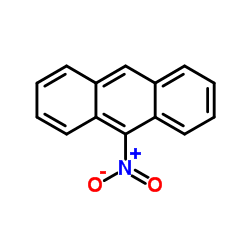Contamination is a frequent confounding factor in toxicology studies with anthraquinone and related compounds.
Byron E Butterworth, Owen B Mathre, Kenneth E Ballinger, Orn Adalsteinsson
文献索引:Int. J. Toxicol. 23(5) , 335-44, (2004)
全文:HTML全文
摘要
Anthraquinone (AQ) (9,10-anthracenedione) is an important compound in commerce. Many structurally related AQ derivatives are medicinal natural plant products. Examples include 1-hydroxyanthraquinone (1-OH-AQ) and 2-hydroxyanthraquinone (2-OH-AQ), which are also metabolites of AQ. Some commercial AQ is produced by the oxidation of anthracene (AQ-OX). In the recent past, the anthracene used was distilled from coal tar and different lots of derived AQ often contained polycyclic aromatic hydrocarbon contaminants, particularly 9-nitroanthracene (9-NA). Many toxicology studies on AQ used contaminated anthracene-derived AQ-OX, including a National Toxicology Program (NTP) 2-year cancer bioassay that reported a weak to modest increase in tumors in the kidney and bladder of male and female F344/N rats and in the livers of male and female B6C3F1 mice. The AQ-OX used in that bioassay was mutagenic and contained 9-NA and other contaminants. In contrast, purified AQ is not genotoxic. The purpose of this paper is to provide additional information to help iterpret the NTP cancer bioassay. This paper describes a quantitative analytical study of the NTP anthracene-derived AQ-OX test material, and presents the results of mutagenicity studies with the 1-OH-AQ and 2-OH-AQ metabolites and the primary contaminant 9-NA. Purified 1-OH-AQ and 2-OH-AQ exhibited only weak mutagenic activity in selected strains of tester bacteria and required S9. Literature reports of potent mutagenic activity for 1-OH-AQ and 2-OH-AQ in bacteria minus S9 are, once again, very likely the result of the presence of contaminants in the test samples. Weak activity and limited production of the 1-OH-AQ and 2-OH-AQ metabolites are possible reasons that AQ fails to exhibit activity in numerous genotoxicity assays. 9-NA was mutagenic in tester strains TA98 and TA100 minus S9. This pattern of activity is consistent with that seen with the contaminated AQ-OX used in the NTP bioassay. Analysis of all the mutagenicity and analytical data, however, indicates that the mutagenic contamination in the NTP bioassay probably resides with compounds in addition to 9-NA. 9-NA exhibited potent mutagenic activity in the L5178Y mammalian cell mutagenicity assay in the presence of S9. The positive response was primarily associated with an increase in small colony mutants suggesting a predominance of a clastogenic mechanism. Quantitative mutagenicity and carcinogenicity potency estimates indicate that it is plausible that the contaminants alone in the NTP AQ-OX bioassay could have been responsible for all of the observed carcinogenic activity. Although AQ-OX is no longer commercially used in the United States, many of the reported genotoxicity and carcinogenicity results in the literature for AQ and AQ derivative compounds must be viewed with caution.
相关化合物
| 结构式 | 名称/CAS号 | 分子式 | 全部文献 |
|---|---|---|---|
 |
9-硝基蒽
CAS:602-60-8 |
C14H9NO2 |
|
Preparation, Structural Determination, and Characterization ...
2015-11-09 [Chemistry 21 , 16411-20, (2015)] |
|
9-Nitroanthracene derivative as a precursor of anthraquinone...
2007-06-01 [Bioorg. Med. Chem. 15(11) , 3869-73, (2007)] |
|
Xanthine oxidase-catalyzed DNA binding of dihydrodiol deriva...
1986-11-26 [Biochem. Biophys. Res. Commun. 141(1) , 245-50, (1986)] |
|
HPLC retention behavior of poly-aromatic-hydrocarbons on ami...
2004-01-01 [Chem. Pharm. Bull. 52(1) , 41-6, (2004)] |
|
Application of 9-nitroanthracene as a matrix for laser desor...
2004-01-01 [Rapid Commun. Mass Spectrom. 18(3) , 360-2, (2004)] |